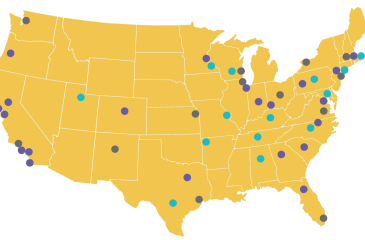University of Minnesota clinical researchers and study teams can now query nearly 40 million patient records through the Accrual to Clinical Trials (ACT) Network for discovery, exploration, and validation of patient cohorts for investigator-initiated multi-site or single-site clinical trials.
“Investigators use cohort discovery and exploration to help generate hypotheses, determine recruitment feasibility and patient identification for recruitment in clinical studies, and for funding proposals and IRB submissions,” said Ahmad AbuSalah, Director of Clinical Informatics Services in CTSI’s Biomedical Informatics Program. “Ultimately, cohort discovery helps researchers accelerate clinical trials by prospectively refining study design and clinical protocols.”
“Grant and IRB applications that show reviewers the PI has done the necessary legwork to discover the patient population size with parameters of interest, are stronger applications and thus are more likely to be approved,” AbuSalah said.
Additionally, the ACT Network can be used to help identify potential partner sites for multi-site studies; though an established collaborator at another site is not necessary to use the tool for cohort discovery.
Adopting it early on
The University of Minnesota Clinical and Translational Science Institute (CTSI) is one of the first 21 Clinical and Translational Science Award (CTSA) hubs across the country to launch the ACT Network, which is developed by the National Institutes’ of Health National Center for Advancing Translational Sciences (NCATS) and is powered by CTSA award site clinical data. An additional 13 academic medical research centers’ clinical data will be included by year’s end.
The ACT Network is HIPAA compliant and pre-approved by the University of Minnesota’s Institutional Review Board (IRB) and does not require study-specific IRB approval.
Running queries
Researchers can run real-time queries on de-identified patient data in the ACT Network through the i2b2 tool’s multi-site Shared Health Research Information Network (SHRINE).
The “drag-and-drop” interface makes it easy to select query criteria and users can use the “Workplace” feature to save query logic and previous work to come to back later.
The ACT Network is one of CTSI’s five data sharing networks it offers to U of M researchers and study teams to tap into opportunities to conduct multi-site clinical trials.
Gaining access
While i2b2 is a self-service tool for investigators, access to the ACT Network on i2b2 requires registration. Researchers and study teams interested in querying data across the ACT Network, should contact CTSI’s Biomedical Informatics Program Best Practices Integrated Informatics Core (BPIC) at [email protected].
BPIC is offering individual training sessions by request and for groups on how to use the tool, and the ACT Network CTSA coordinating hub has developed a customized University of Minnesota training website.
There is no cost to the researcher, study team, or department to use the tool.
